Description
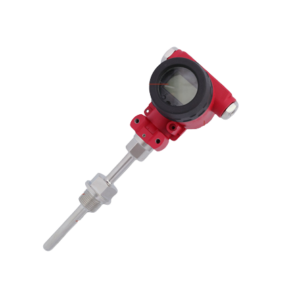 Temperature Transmitters sometimes called Resistance thermal diodes (RTDs), also known as resistance thermometers, accurately sense process temperatures with a high degree of repeatability and interchangeability of elements. The RTD is composed of metallic elements which change in resistance as a function of temperature.
Temperature Transmitters sometimes called Resistance thermal diodes (RTDs), also known as resistance thermometers, accurately sense process temperatures with a high degree of repeatability and interchangeability of elements. The RTD is composed of metallic elements which change in resistance as a function of temperature.
Temperature transmitters are devices used to measure temperature in various applications and convert the temperature into a standardized output signal, typically a 4-20 mA current signal or a digital signal such as HART or Modbus. Here are some key points regarding temperature transmitters:
Functionality: Temperature transmitters receive signals from temperature sensors (like RTDs, thermocouples, or thermistors) and then provide a standardized output that can be easily interpreted by control systems, PLCs, or other monitoring devices.
Types of Temperature Transmitters
- Analog Temperature Transmitters: These convert temperature measurements to a 4-20 mA signal. The transmitter varies the current to represent the temperature measured.
- Smart or Digital Temperature Transmitters: These not only convert the signal but also can perform additional functions like self-diagnostics, temperature linearization, etc. They often communicate with control systems using digital protocols like HART, Foundation Fieldbus, or Modbus.
Accuracy: Temperature transmitters come in various accuracy classes, typically ranging from 0.1% to 1% of the full-scale measurement.
Mounting: They can be mounted in various ways, such as head-mounted, field-mounted, or rail-mounted, depending on the application and environment.
Features
Signal Linearization: Many transmitters offer linearization features to compensate for non-linearities in the temperature sensor signal.
Cold Junction Compensation (for thermocouples): Compensates for the reference junction temperature in thermocouple measurements.
Diagnostic Features: Some transmitters can perform self-diagnostics and provide information about the health of the temperature sensor and the transmitter itself.
Configuration Capabilities: Smart transmitters can often be configured remotely, allowing for easier setup and adjustment.
Applications: Temperature transmitters are used in a wide range of industries including manufacturing, HVAC systems, food and beverage, pharmaceuticals, and many more, wherever accurate temperature measurement and control are essential.
Summary
Overall, temperature transmitters play a crucial role in modern industrial processes, providing accurate and reliable temperature measurements for a variety of applications.
In addition, while in operation, a small excitation current is passed across the element/voltage, which is proportional to resistance. It is then measured and converted to units of temperature calibration in resistance format or coupled with a “puck”. The puck is used to a signal preferred (4-20ma, Exi ratings, 0-10vdc, etc.).
Furthermore, the RTD element is manufactured by winding a wire (wire wound elements) or plating a film (thin film elements). Furthermore, it is on a ceramic or glass core and seals the element within a ceramic or glass capsule.
Also, most resistance temperature detectors and resistance thermometers have a low initial resistance. The resistance is often 100 ohms, and there is a small change in resistance per unit of temperature range. Furthermore, the resistance of the lead wire is often compensated for. By selecting the proper elements and protective sheathing, RTDs can operate in a temperature range of (-200 to 650) °C [-328 to 1202] °F.
Furthermore, SRS also manufactures resistance thermal diodes for many industrial-type applications. From single- or dual-element RTDs, PT100s-PT1000s, to Sanitary CIP configurations.
Finally, our product engineers will design an RTD measurement device for your specific application. This includes sensor assemblies that require connection heads, thermowell, and/or transmitters. This is for various industrial general duty, sanitary, or explosive environments.
Are you looking for Thermowells?
Are you looking for Temperature Gauges?
Specifications
RTD, TC, Ohm, and bipolar mV input and analog output
High definition local operator interface (LOI) with 3 optical buttons Ex d explosion proof/flame proof in aluminum or 316 stainless steel version
HART compatibility</p>
High definition display
- 0-350 degree position adjustments.
- Dynamically adaptive to wear or accumulate dirt
- Optical Buttons
- Immune to Light
- Backlit</li>
<h5><strong>Configuration<</strong>/strong>
- Local interface</li></li>
- HAR
- T Connection
Advantages / Disadvantages
Advantages of Temperature Transmitters
Accuracy: Temperature transmitters provide accurate temperature measurements, ensuring precise control and monitoring of temperature-sensitive processes.
Signal Standardization: They convert temperature readings into standardized output signals, making it easier for control systems to interpret and act upon the data.
Remote Monitoring and Control: Smart temperature transmitters offer features like remote configuration and diagnostics, allowing for efficient monitoring and control of temperature parameters.
Improved Reliability: By interfacing with various temperature sensors, transmitters help improve the overall reliability of temperature measurements in industrial applications.
Easy Integration: Temperature transmitters can be easily integrated into existing control systems, making them versatile and adaptable to different environments.
Disadvantages of Temperature Transmitters
Cost: High-quality temperature transmitters, particularly smart transmitters with advanced features, can be expensive to purchase and maintain.
Complexity: Smart temperature transmitters can be complex to set up and configure, requiring specialized knowledge for optimal use.
Potential for Signal Interference: In environments with high electromagnetic interference, temperature transmitter signals may be susceptible to noise, leading to inaccuracies in temperature readings.
Maintenance Requirements: Like any electronic device, temperature transmitters require regular maintenance and calibration to ensure accurate and reliable performance.
Compatibility Issues: Ensuring compatibility between temperature transmitters and temperature sensors, as well as control systems, can sometimes be a challenge, particularly in complex industrial setups.
Q&A
Q: What is a temperature transmitter?
A: A temperature transmitter is a device that converts temperature readings from temperature sensors into standardized output signals for measurement and control systems.
Q: What are the common types of temperature transmitters?
A: Common types of temperature transmitters include analog temperature transmitters, which convert temperature measurements into a 4-20 mA current signal, and smart or digital temperature transmitters, which offer additional functionalities and communication protocols.
Q: How are temperature transmitters typically powered?
A: Temperature transmitters are typically powered with 24V DC power supplies, commonly used in industrial settings for sensor and transmitter operations.
Q: What kind of sensors are compatible with temperature transmitters?
A: Temperature transmitters are compatible with various temperature sensors, including Resistance Temperature Detectors (RTDs), thermocouples, and thermistors.
Q: What is the purpose of cold junction compensation in temperature transmitters?</p>
A: Cold junction compensation is used in temperature transmitters to compensate for the ambient temperature at the reference junction of a thermocouple, ensuring accurate temperature measurements.
Q: What are some key features of smart or digital temperature transmitters?
A: Smart or digital temperature transmitters offer features such as self-diagnostics, signal linearization, communication protocols like HART or Modbus, and remote configuration capabilities.
Q: Where are temperature transmitters commonly used?
A: Temperature transmitters are commonly used in various industries such as manufacturing, HVAC systems, food and beverage processing, pharmaceuticals, and more, where accurate temperature measurement and control are essential for operations.
Applications
Energy and Power Uses for Temperature Transmitters
SRS produces several temperature sensors for various applications in the energy/power Industry. Sensors for wind turbine bearings, boiler, and piping systems, we make sensors for almost any power application.
Finally, specific sensor assemblies include thermowells and are fitted with transmitters when remote readings are required. Extremely accurate RTD sensors are available for applications that require precision accuracy.
Aerospace Uses for Temperature Transmitters</strong></h4>
lass=”yoast-text-mark”>=”color: #8d8d8d;”>Production of components for the aerospace industry requires reliable, precise temperature measurement which SRS can provide through different sensors and configurations.
e=”color: #8d8d8d;”>Hence, various types including and configurations which include protection tubes, and general purpose RTDs are available for direct immersion, composite mixing, forming, or other processes.
Aggregate Uses for Temperature Transmitters
tyle=”color: #8d8d8d;”>For asphalt and cement mixing and drying applications, SRS produces temperature sensors, including abrasion-resistant RTDs, for use in these industries. Most sensor assemblies are constructed with connection heads and various types of protection tubes.
Chemical Uses for Temperature Transmitters
<span style=”color: #8d8d8d;”>The chemical industry incorporates various specialties with their own unique specific process requirements. SRS produces temperature sensors that meet these application specifications within each industry. SRS has designed and developed many sanitary CIP (Clean-In-Place) sensors that are 3-A approved.
yle=”color: #8d8d8d;”>Also, SRS builds a variety of explosion-proof sensor assemblies, which are approved by UL and FM for use in hazardous locations in the U.S. and Canada. For more corrosive environments and acid-based applications, we manufacture sensors with protection tubes, made of materials particular for each application.
Food Industry Uses for Temperature Transmitters
SRS produces temperature sensors for the food, beverage, and dairy industries. Many of these sensors are sanitary CIP (Clean In Place) for convenient washdowns and are 3A-approved. We have sensors to meet High Temperature, Short Test (HTST) requirements for pasteurization.
Finally, there are various sensor sizes, clamps, gaskets, and fittings to meet different applications. Also, the transmitters are built into RTD assemblies for specific applications. While penetration-style RTDs are available for use in fresh and frozen meat, fish, poultry, dough, and other food products.
Heat Tracing Uses for Temperature Transmitters
Also, in the heat treating industry, SRS can provide a solution for their temperature sensor needs.</span>
HVAC Uses for Temperature Transmitters
SRS makes temperature sensors for commercial le=”color: #8d8d8d;” href=”https://en.wikipedia.org/wiki/HVAC”>HVAC applications. Most sensors are available with 4-20 mA transmitter options. Duct areas requiring an average temperature of multiple points within the system can use our RTD Averaging Sensor.
Incineration Uses for Temperature Transmitters
Moreover, medium to high-temperature sensors for incineration applications are available in a variety of options from SRS. The protection tubes on these sensors range from standard service for low-corrosive environments to Recrystallized Silicon Carbide (RSiC) for highly corrosive applications. These sensors can be calibrated to comply with EPA guidelines.
Medical Uses for Temperature Transmitters
SRS makes precise, accurate sensors used in the medical industry. Many of these assemblies are sanitary Clean-In-Place (CIP) sensors that are available with transmitters and thermowell protection and are 3-A approved.
Also, almost all sensors are precise in temperature measurement, and SRS’s accuracy and repeatability are most noteworthy among its competitors. Some of the sensors are designed for fast response times – critical in laboratories and environmental chambers. More rugged sensors are available for use in the high-temperature stress found in medical autoclaves and sterilization equipment.
Metal Fabrication Uses for Temperature Transmitters
First of all, SRS makes a variety of rugged protection tubes for the metal processing industry. We make Magnesium Oxide (MgO) RTDS for heat-treating applications. Angle thermocouples, or “over-the-side” sensors with protection tubes are also available.
Consequently, most sensor assemblies for use in this industry are produced with connection heads and protection tubes. SRS RTDs are used to measure the process temperature of many metals, including copper, steel, aluminum, nickel, platinum, and others.
Mining Uses for Temperature Transmitters
SRS manufactures a variety of RTD assemblies to measure temperature in refining and mineral processing applications. For rugged applications, specific sensor assemblies are available with thermowell protection.
Also, we produce RTDs for use in engine monitoring in heavy-duty mining vehicles and equipment.
Oil and Gas Uses for Temperature Transmitters
For the multiple processes in the extraction, production, refining, and distribution of oil, gas, and other petrochemicals, SRS offers several temperature sensors. Among these, our Teflon-coated assemblies resist corrosion and chemical attack.
Also, these sensor assemblies are built for direct immersion in the process, while other types are constructed with a thermowell for protection. Heat tracing sensors are available to measure the surface temperature of pipes within systems.
Furthermore, SRS’s use of explosion-proof sensor assemblies is approved by FM and UL, CE, and CSA ratings which carry a broad lSA for use in U.S. and Canadian hazardous locations. Most of these assemblies are available with transmitter options.
In Conclusion, it can also be used for use in engine monitoring in heavy-duty distribution vehicles and extraction equipment.
Pharmaceutical Uses for Temperature Transmitters
SRS provides many temperature sensors for the specific needs of the pharmaceutical industry. For sanitary applications, we produce a line of Clean-In-Place (CIP) sensors with connection heads, which are 3-A approved and typically have Transmitters built in. Other sensors are designed for immersion or surface measurement in the injection molding and packaging side of the industry.
Furthermore, besides having CIP assemblies, some sensors have a quick-disconnect plug for easy removal. Also, while maintaining a moisture-resistant seal when connected. Also, for more corrosive environments, such as incineration or disposal of waste, we manufacture sensors with protection tubes, made of materials particular for each application.
Waste / Water Uses for Temperature Transmitters
Finally, we produce temperature sensor assemblies with connection heads for wastewater treatment applications. Specific sensors are available with thermowell protection for heavy-duty service. These sensors can be calibrated to comply with EPA guidelines.
Drawings
Only logged in customers who have purchased this product may leave a review.
 Temperature Transmitters sometimes called Resistance thermal diodes (RTDs), also known as resistance thermometers, accurately sense process temperatures with a high degree of repeatability and interchangeability of elements. The RTD is composed of metallic elements which change in resistance as a function of temperature.
Temperature Transmitters sometimes called Resistance thermal diodes (RTDs), also known as resistance thermometers, accurately sense process temperatures with a high degree of repeatability and interchangeability of elements. The RTD is composed of metallic elements which change in resistance as a function of temperature.
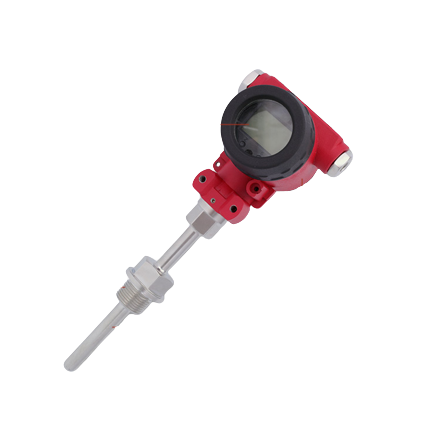
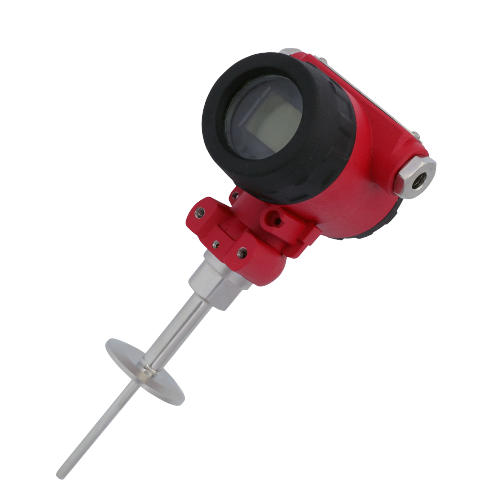
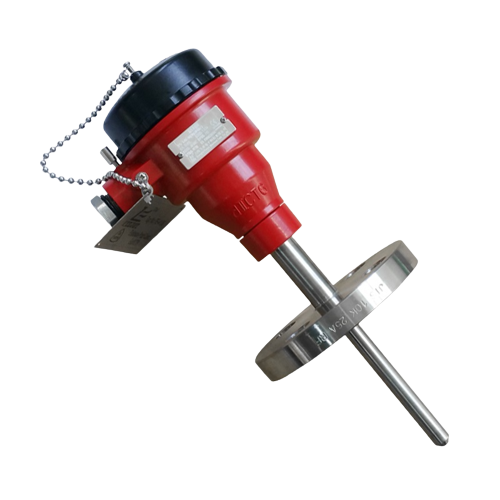
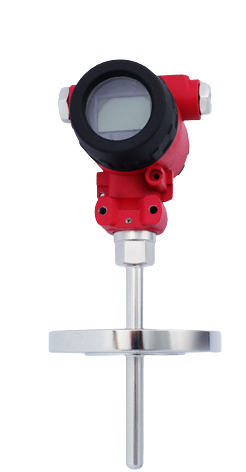
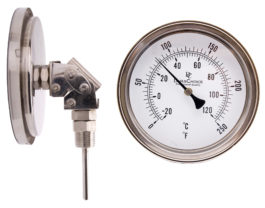
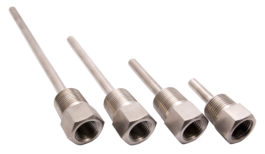
Reviews
There are no reviews yet.